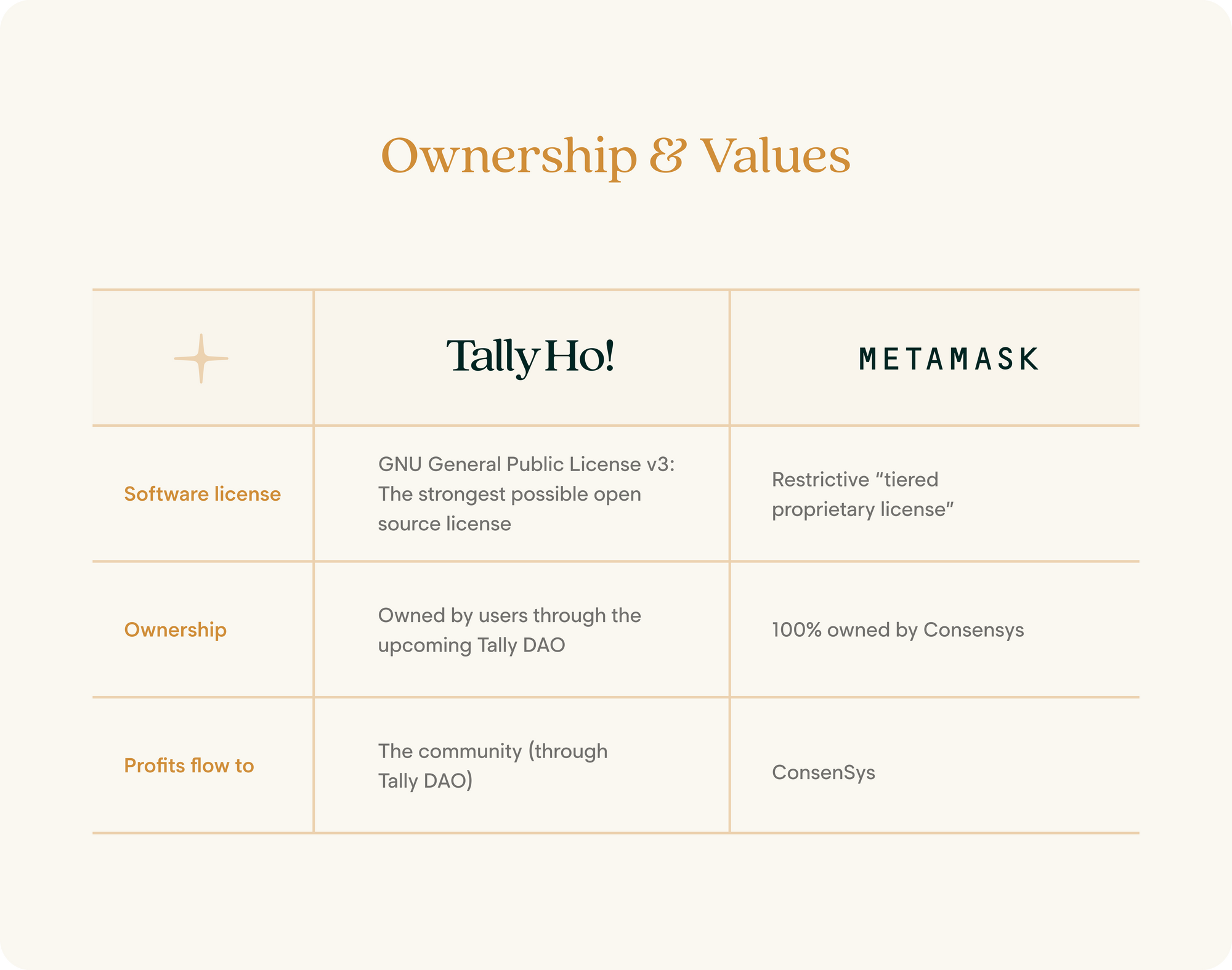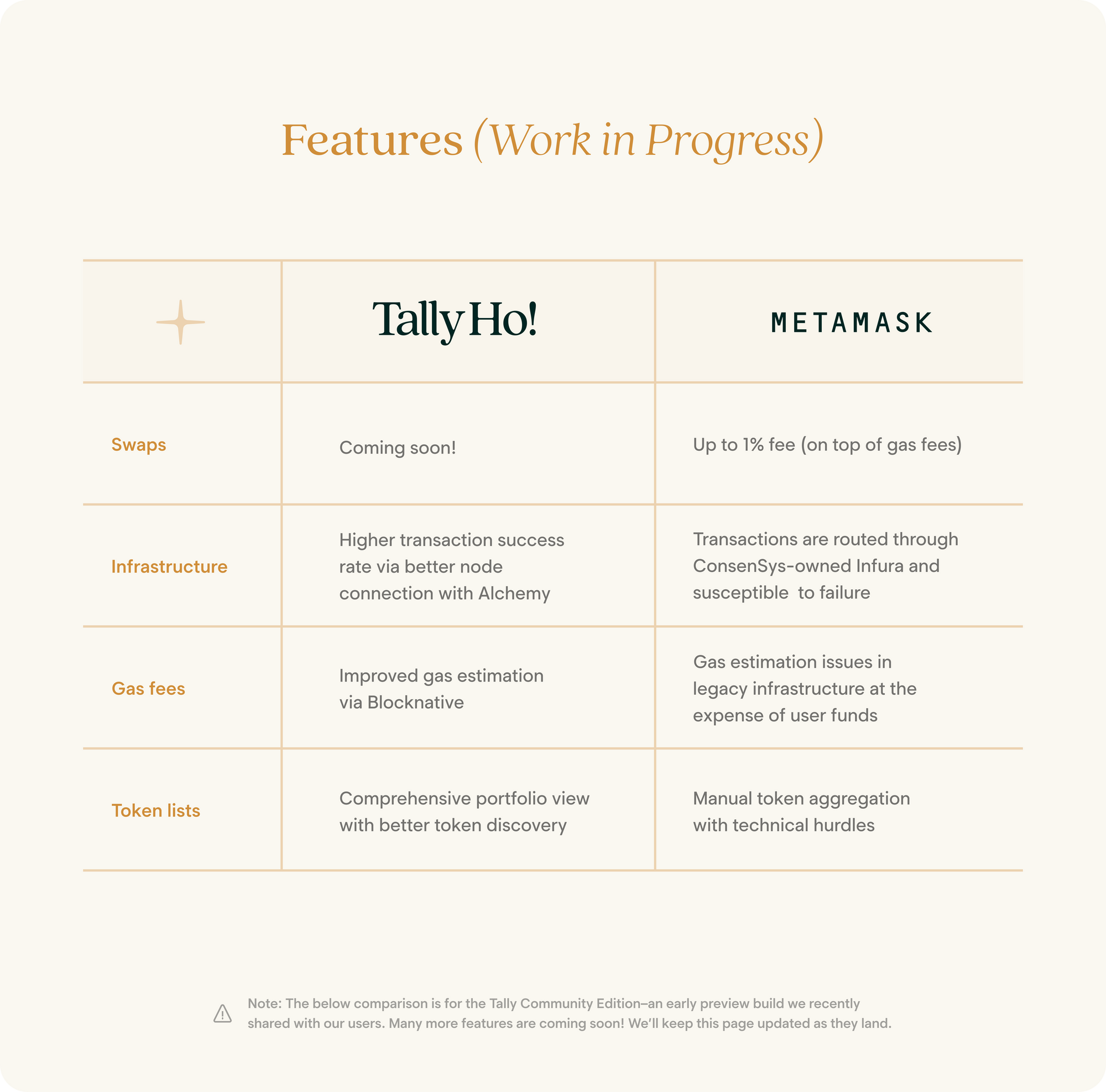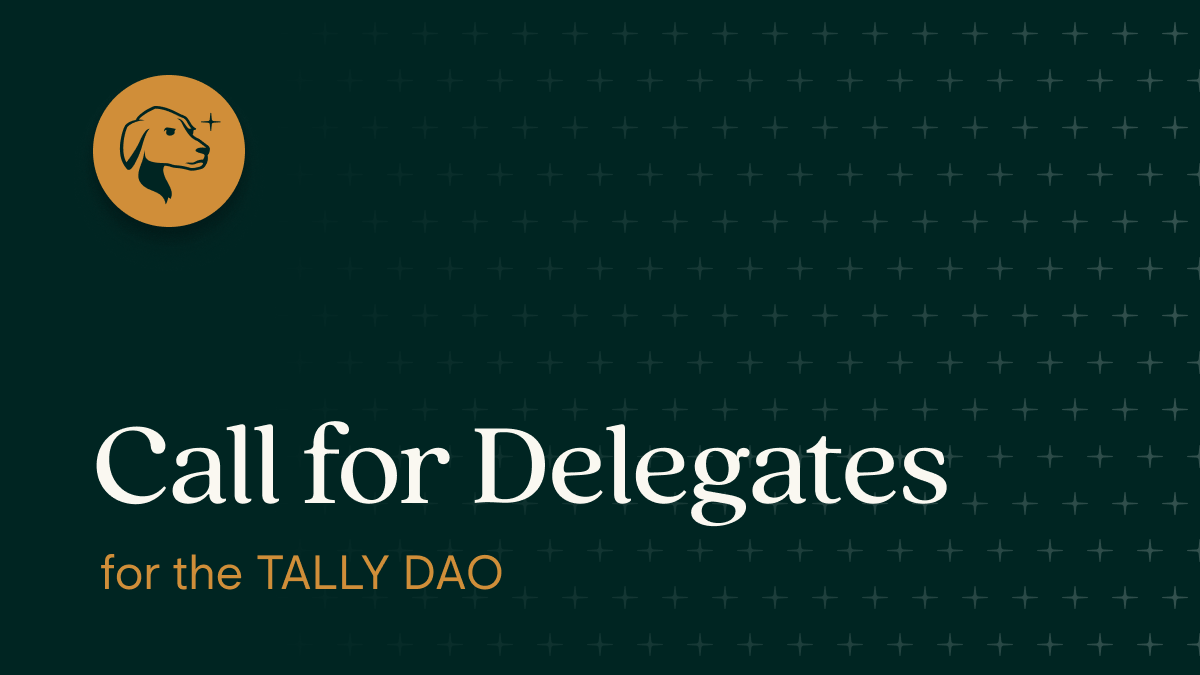Tally Ho vs. MetaMask
Let’s take a quick look at how Tally Ho and MetaMask stack up.
The Early Days of Web3
If you’re like most early adopters, you probably made your first foray into Web3 using the wallet MetaMask.
It was the first browser extension wallet for Ethereum, and MetaMask was one of my favorite early Ethereum products. It transformed the web browser into a gateway for dApps, DeFi, NFTs, and DAOs.
But for all it did for the early Ethereum ecosystem, at the end of the day MetaMask is operated as a Web2 business. Founded in 2016, MetaMask is owned by a command-and-control corporation—not a community.
In 2022, this approach is starting to show its age. Last year, MetaMask turned its back on open source (even after receiving an early grant from the Ethereum Foundation as well as countless contributions from Gitcoin). And even though MetaMask has made over $250 million in fees from its users, the community hasn’t received a penny.
Tally picks up where MetaMask left off
Tally Ho is the first community-owned Web3 wallet. It already has the features you love from MetaMask (plus many more coming soon!), and unlike MetaMask, it’s 100% open source. Most importantly: Tally Ho is owned by its users (not a corporation), and all profits are shared with the community, not siphoned away to shareholders.
Let’s take a quick look at how Tally Ho and MetaMask stack up:


Why Community Ownership Matters
Last year, MetaMask started raking in profit through its MetaMask Swaps feature:
While no one was looking, Metamask just started fucking printing. Making ~$170K / day in fees at $20MM / day in volume. pic.twitter.com/hoFhSS84Pk
— Tom Schmidt (@tomhschmidt) February 10, 2021
At the time of this article, MetaMask is now earning over $1 million 👏 every 👏 single 👏 day and has amassed over $250 million dollars in fees. Moreover, MetaMask’s corporate parent Consensys raised over $250 million in 2021 from firms like JP Morgan, UBS, and HSBC. We have to ask: Where is all this money going? It doesn’t appear to be going to significant product improvements, better support, or (allegedly) even MetaMask’s founding team. Perhaps more concerning are MetaMask product updates that seem to be aimed at blocking users in certain countries and increasing user surveillance. This is what happens when your Web3 wallet isn’t actually Web3-native.
Tally Ho is different.
Once the full version is live, users will own Tally Ho through the upcoming DAO and proposals for Tally Ho’s future will need to be approved by the community. It will be extremely difficult for Tally Ho to misdirect wealth or act against its users (i.e. by blocking users because of their nationality, or conducting surveillance on them, or by enriching shareholders instead of community members), simply because users will have the power to reject those actions. Decisions will happen in public (not behind closed doors), and as a result we expect that any and all fee revenue will flow directly to users or to product improvements and ecosystem development.
Imagine all the good $1 million a day could do if it went straight to users or to funding public goods infrastructure for Ethereum.
☝️ This is the future we’re building.
Why Open Source Matters
Last year MetaMask abandoned open source software in favor of a “tiered proprietary license.” This was on the same day it announced that “MetaMask’s entire codebase is now owned by ConsenSys.”
Starting today, we at MetaMask will be publishing our work under a new license. For end users and application developers, this will not have any impact, but it helps us protect our long term sustainability.
— MetaMask (@MetaMask) August 20, 2020
https://t.co/w8z8uXbE4a
This tactic makes sense in the context of Web2 (it appears MetaMask made this move after being forked by Brave). But it’s at odds with the values of the early MetaMask team. It also makes your ask what “MetaMask … [being] owned by its community in a meaningful way’” could or would look like.
How can a community truly own a wallet if all the code is owned by someone else?
At Tally Ho, our approach is different.
After all, free and open source software is at the heart of Web3 and is the foundation of community ownership. That’s why Tally Ho is 100% open source under GPLv3, a software license that offers the strongest protections under law to ensure that Tally Ho—and all the code we write as a community—remains free.
If you’re a developer who contributes to Tally Ho, this means your work will benefit the whole world and remain free... rather than being exploited by for-profit software companies. And if you’re a user, this means Tally Ho’s code belongs to you as much as it does to anyone else:

Tallying Up the Score
Now that you’ve read about the differences, it should be clear:
Tally Ho is a Web3 community. MetaMask isn’t.
And Tally Ho’s community is open to everyone. We truly appreciate the foundation the original MetaMask team laid back in 2016. But it’s 2022, and your portal to Web3 should be Web3-native, not a Web2 hangover.
The best way to join us is to download the Tally Ho Community Edition (a sneak preview of what the full release of Tally Ho will include) and join our community on Discord.
If you’re a developer, check out our GitHub.
And if you’re ready to take a leadership role in the Tally Ho DAO, you can sign up to be a Tally Ho Delegate below:



